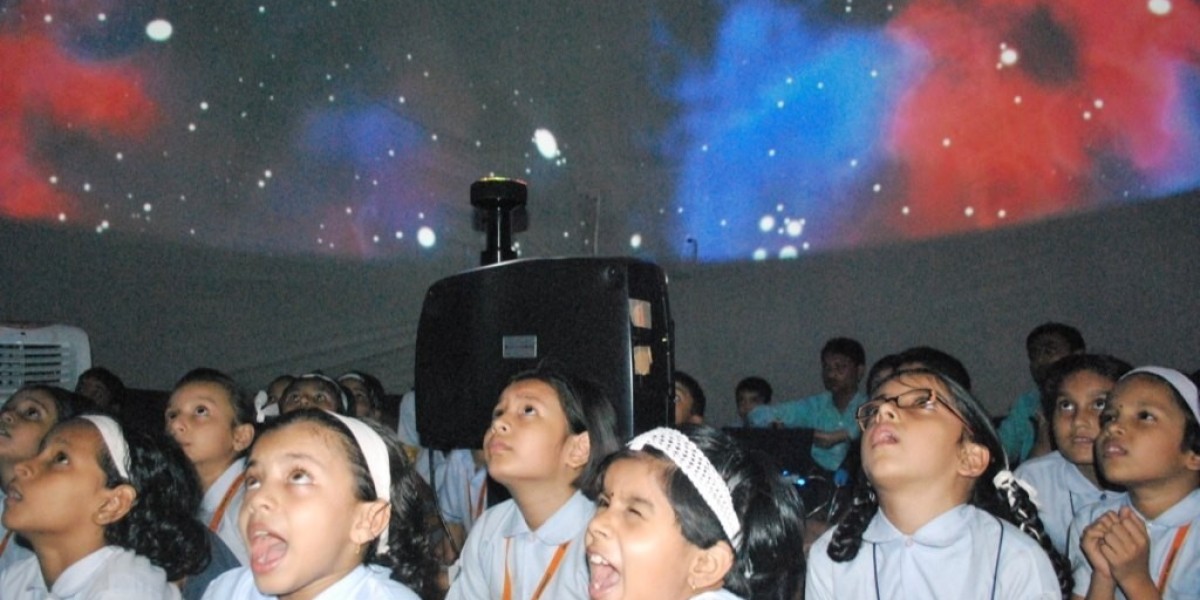In the realm of education, fostering curiosity and wonder about the universe is essential for young minds. Astronomy, with its vastness and beauty, has the power to ignite a passion for science and exploration. Imagine a scenario where students don't just read about the cosmos in textbooks, but can step inside a portable planetarium right at their school—immersing themselves in the wonders of the night sky. This scenario is increasingly becoming a reality with the advent of portable planetariums designed specifically for educational settings.
What is a Portable Planetarium?
A portable planetarium is a compact, inflatable dome structure equipped with a digital mobile planetarium projector that displays realistic simulations of the night sky. These systems are designed to replicate the experience of stargazing indoors, allowing students to observe stars, planets, constellations, and other celestial phenomena in a controlled environment. Portable planetariums are versatile and can be set up in gymnasiums, libraries, or classrooms, making them accessible to schools without observatories or access to planetarium facilities.

The Educational Impact
The introduction of Portable planetariums in schools has revolutionized the way astronomy is taught. These immersive experiences offer several educational benefits:
- Engagement: Students are captivated by the visual spectacle of the cosmos. The interactive nature of planetarium presentations encourages active learning and engagement with the subject matter.
- Visualization: Abstract concepts like the motions of celestial bodies, phases of the moon, and the scale of the universe become tangible through 3D simulations. This aids in better comprehension and retention of complex astronomical concepts.
- Inspiration: Experiencing the vastness of space firsthand can inspire students to pursue careers in science, technology, engineering, and mathematics (STEM) fields.
- Accessibility: Portable planetariums are especially valuable for schools located in urban areas with light pollution, where stargazing outdoors is challenging. They bring the universe to students who might not otherwise have the opportunity to observe the night sky.
- Curriculum Integration: Planetarium visits can complement and enhance existing science curricula, aligning with topics in physics, earth science, and astronomy.
Features of Portable Planetariums
Modern portable planetariums are designed with educational needs in mind:
Projection System: Utilizes high-resolution projectors capable of displaying detailed celestial maps and animations.
Inflatable Dome: Made of durable materials, the dome can be quickly inflated and deflated for easy setup and storage.
Software: Includes user-friendly software that allows educators to customize presentations and control the planetarium experience.
Seating: Accommodates groups of students comfortably within the dome, ensuring an inclusive experience for all.
Curriculum Content: Many portable planetariums come with pre-designed lesson plans and educational content suitable for different grade levels.
Implementing Portable Planetariums in Schools
Science experiment kits are educational tools that provide materials and instructions for conducting hands-on experiments. These kits enhance learning by allowing students to explore scientific concepts through engaging activities, fostering curiosity and critical thinking skills.
The adoption of portable planetariums in educational settings requires careful planning and support:
- Training: Educators need training to effectively integrate planetarium experiences into their teaching practices. This includes understanding the technology, creating lesson plans, and facilitating discussions based on the presentations.
- Scheduling: Schools must coordinate schedules to ensure that all students have the opportunity to experience the planetarium. Regular visits or dedicated astronomy days can help maximize the impact.
- Community Engagement: Involving parents and the broader community can enhance the educational experience. Public planetarium shows can be organized to showcase student projects and foster interest in astronomy.
- Funding: Acquiring a portable planetarium involves an initial investment. Schools can seek funding through grants, sponsorships, or partnerships with local organizations passionate about STEM education.
Case Study: Impact in Real Classrooms
Consider a middle school in an urban area where light pollution limits stargazing. The school acquires a portable planetarium and integrates it into the science curriculum.
Engagement: Students eagerly participate in planetarium sessions, asking questions and connecting what they see to their textbook knowledge.
Creativity: Educators design interdisciplinary lessons that blend astronomy with art, language arts, and history, enriching the learning experience.
Long-Term Impact: Students express newfound interest in astronomy and pursue related projects, such as building model solar systems or researching space exploration.
Looking Ahead: Future Possibilities
The evolution of portable planetarium technology holds promise for even greater educational impact:
Virtual Reality (VR) Integration: Future systems might incorporate VR headsets to offer even more immersive experiences.
Remote Learning: Remote access to planetarium experiences could extend the reach of astronomy education beyond the physical classroom.
Customization: Advanced software features could allow educators to tailor presentations to individual student interests and learning styles.



